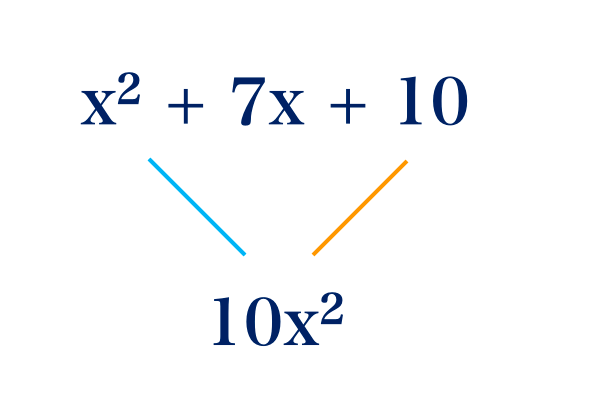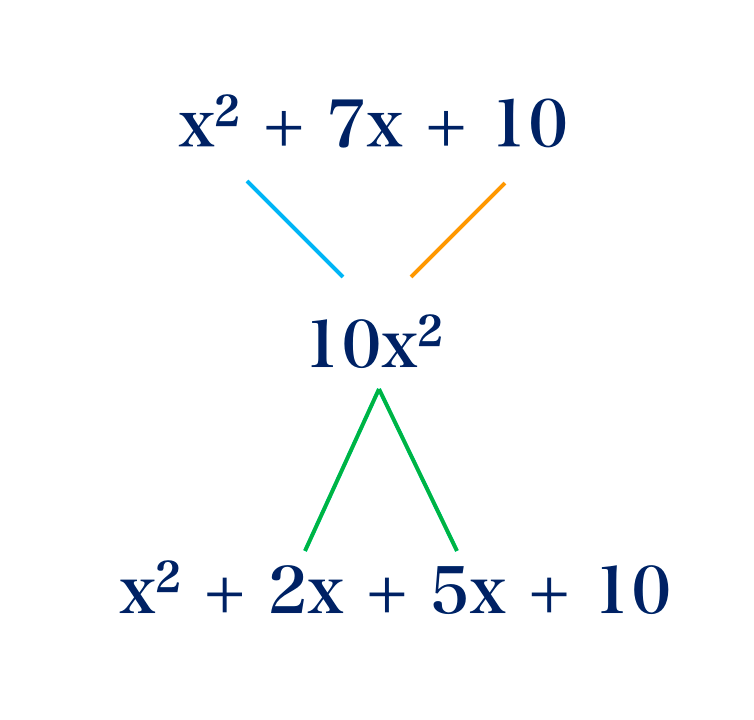Topic Content:
- Factorization of Trinomials of the Form x² + bx + c
A trinomial is an algebraic expression containing three terms.
For example, ax2 + b + c is a trinomial because it has three terms i.e. ax2, bx, c when a = 1 this expression becomes x2 + b x + c, a simple trinomial.
Some quadratic expression can be factorized by splitting the middle term.
Therefore, to factorize a trinomial of the form ax2 + bx + c, look for pairs of factors of the constant term c that adds up to b i.e. the coefficient of x.
Worked Example 6.3.1:
Factorize:
a. x2 + 7x + 10
b. x2 + 3x + 2
c. x2 + 8x + 15
d. y2 + 9y + 18
e. 2x2 + 13x + 6
Solution
a. x2 + 7x + 10

i. First multiply The first and the last term i.e. a × c
ii. Look for the factors of 10x2, two factors when they are multiplied give 10x2 and when added they give 7x, which is the middle term.

Factors of 10: 1, 2, 5 and 10
Factors of 10x2 that add up to 7x are 2x and 5x
that is:
2x × 5x = 10x2
2x + 5x = 7x
You are viewing an excerpt of this Topic. Subscribe Now to get Full Access to ALL this Subject's Topics and Quizzes for this Term!
Click on the button "Subscribe Now" below for Full Access!
Subscribe Now
Note: If you have Already Subscribed and you are seeing this message, it means you are logged out. Please Log In using the Login Button Below to Carry on Studying!



Responses